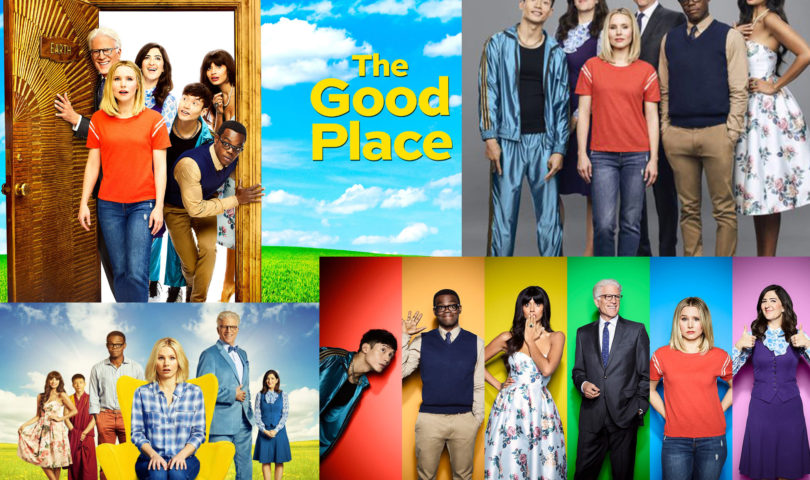“The Good Place,” a fantasy comedy television series, describes the lives of four friends in the afterlife. The show follows Eleanor Shellstrop (Kristen Bell), who discovers after speaking with the angel-architect overseeing the Good Place neighborhood, Michael (Ted Danson), that she was mistakenly put in the Good Place, a heaven-like utopia, and instead should have put in the Bad Place. In order to avoid eternal damnation, she has Chidi Anagonye (William Jackson Harper), a moral philosophy professor and Eleanor’s assigned soulmate, give her a series of moral philosophy lessons. The pair also meet both Tahani Al-Jamil (Jameela Jamil), a wealthy socialite and philanthropist, and Jianyu Li (Manny Jacinto), a Taiwanese Buddhist monk, who are soulmates. Throughout the course of the series, the four explore the Good Place and learn what it means to be a truly good person. Although each episode is only 20 minutes long, the author (Michael Schur) has managed to pack each episode full of philosophical questions, jaw-dropping twists and witty jokes.
In television history, sitcoms have always taught simple, moral lessons: tell the truth, be compassionate and put others before yourself. Additionally, sitcoms are about the same at the beginning and end of each episode. “The Good Place” takes these moral lessons and plotlines to a whole new level. In “The Good Place” we not only learn about doing the right thing, but we also explore the ethical philosophies behind it.
The main themes explored in “The Good Place” are moral evolution, character growth and ethics. As Eleanor begins to learn about how different moral decisions can lead to multiple unintended consequences, she realizes the intentions behind these “good actions” matter more than the simple outcome. The show focuses on what makes a good person and if goodness is innate or is shaped by the environment. Through the point system (a system of determining where a person goes after death based on how many positive or negative actions that person performs), the show teaches that being ethical is a series of real choices with real consequences. All of our choices have an impact, and “The Good Place” encourages its viewers to be consciously aware of those unintended consequences and how these consequences often manifest themselves, which cannot be seen in the real world.
Moreover, character growth has always been a part of sitcoms, but it is usually gradual and happens over the years, in the background. Due to the structure of “The Good Place,” character growth is put in the front and center of the plot. It is easy to become invested in these characters, as they not only talk and learn about becoming better people, but we can actively see them trying and succeeding. Shows about morality want to renew our hope, and that is what “The Good Place” does; the show allows viewers to find hope in themselves and learn that it is never too late to improve themselves.
I spoke to students and teachers about “The Good Place,” and most of them have either heard of or watched the show. Keya Pardasani, a junior, commented that the show’s “characters are all so fun and unique with distinct personalities. The different obstacles that the characters are put in and the show’s ability to portray a full plot in 20-minute episodes are what makes “The Good Place” different from other sitcoms I have watched. I enjoy the mind-blowing plot twists, the specific and thoughtful setting and ethical questions with comedy.”
“The show appeals to people who want to learn something while enjoying slapstick, silly comedy. The sophisticated moral messaging, the cast’s amazing chemistry and the philosophical lessons I have learned are what makes the show memorable,” said Ms. Kalinski, one of San Mateo’s US History teachers, who is also very enthusiastic about this TV series.
If you want to learn about mind-provoking moral issues while laugh-crying at the characters’ humorous remarks, then “The Good Place” is for you.

